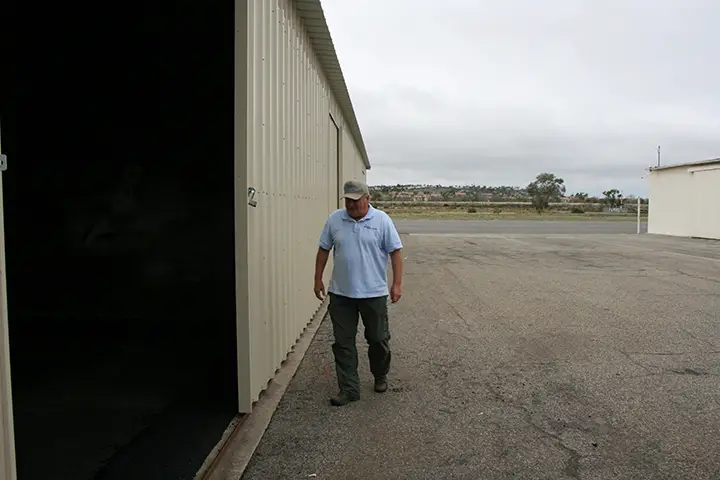OCEANSIDE — Things are looking up for Bob Maxwell Memorial Airfield Airport, with a draft of its master plan completed and improvements ready to take off next year.
The updated master plan, that has been fine-tuned for the last two years, was shared at a community meeting June 10. It will serve as guide for future airport development for the next 20 years.
The last master plan was adopted in 1994.
Community input on the updated plan has been gathered at numerous open houses, workshops and surveys beginning in 2013.
Andrew Scanlon, AECOM project manager in charge of developing the plan, said it is based on accommodating a minimum of 90 airplanes on site, and 24,300 forecasted takeoffs and landings annually.
The Federal Aviation Administration, or FAA, safety regulations are a first priority for planned airside and landside improvements.
Key airside improvements, that ensure safe takeoffs and landings, include moving taxiway A south, converting taxiway B to a blast pad and relocating the airport service road and Eddy Jones Road.
“Runway length and location are not changing,” Scanlon said.
Other upgrades include repavement of runway shoulders and additional airfield signage.
FAA funds will be sought to cover these improvements.
Landside improvements, that address airport amenities, include installation of perimeter fencing, additional hangars, terminal building expansion and a designated viewing area.
Plans include a two-story, 10,000-square-foot build-out of the terminal, which will house a restaurant with outdoor seating, meeting rooms, showers and a museum.
Adding a restaurant and museum is contingent on private developer interest and funds.
Space is also allotted for ongoing recreational parachute landings.
Improvements will be made in three phases over the next 35 years.
Phase I improvements include installation of a perimeter fence, tree removal and additional hangars. Upgrades will cost $9 million and take five years to complete.
Phase II improvements are set to expand the terminal building, replace south side hangars and maintain airport pavement. Projects add up to $12 million.
Phase III will see improvements to north side hangars and tiedowns, south side hangars and add north side automobile parking and a viewing area. Projects total $10.6 million.
Scanlon said half of the proposed projects qualify for possible FAA funding.
Doug Eddow, city real estate manager, said the airport already has sufficient funds to cover the cost of phase I fencing.
He added the phase I budget includes $3.5 million to replace south side hangars, which may instead be refurbished at a fraction of the cost.
Since Airport Property Ventures, or APV, took over airport management in 2009 several new hangars have been built. Others have been refurbished within the last year.
The airport currently has three types of hangars — new, refurbished and original.
New hangars are larger, better constructed and have a door that folds up allowing easy access to aircraft.
Rick Koehler, airport assistant manger, said during the rebuild the foundations also had to be leveled.
The recently refurbished hangars have new, pitched roofs to allow proper water runoff, and are redone inside and out.
Original hangars that still stand were built in 1963. They are patched, leaking and have roof damage. The roofs are flat, which has led to some of the problems. Dennis Easto, airport manager, said the hangars are rented “as is” while they await refurbishment.
Hangars range in size from 1,250 to 1,847 square feet, and are rented out from $500 to $1,200 a month.
Next steps for the master plan are FAA and Caltrans approval of the airport layout, an environmental review and City Council adoption.
Studies will also note any development restrictions due to the airport being located within a floodplain.
Approvals and studies are expected to take a year.
Once the master plan is approved, FAA funds will be applied for to cover airside improvements.
A marketing plan for the airport will be developed by APV. It is expected to remain a small airport used by recreational pilots.



